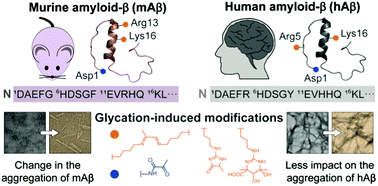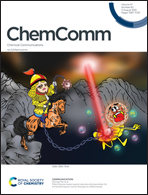Distinct impact of glycation towards the aggregation and toxicity of murine and human amyloid-β†
Abstract
Glycation of human Aβ (hAβ) is implicated to induce the deposition of amyloid aggregates found in the Alzheimer's disease (AD)-affected brain. Murine Aβ (mAβ) differs from hAβ in three different amino acid residues (Gly5, Phe10, and Arg13) and is less likely to form amyloid aggregates. Herein, we report that the advanced glycated end products of mAβ40 over hAβ40 are distinctly generated. The different glycation between the two peptides can govern their aggregation kinetics, structural transition, and cytotoxicity.

- This article is part of the themed collections: Multimolecular Crowding in Biosystems and Chemical Communications HOT articles


 Please wait while we load your content...
Please wait while we load your content...